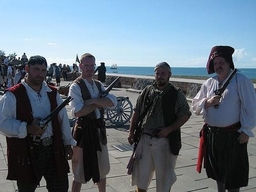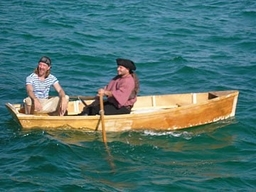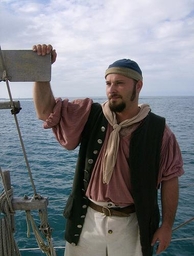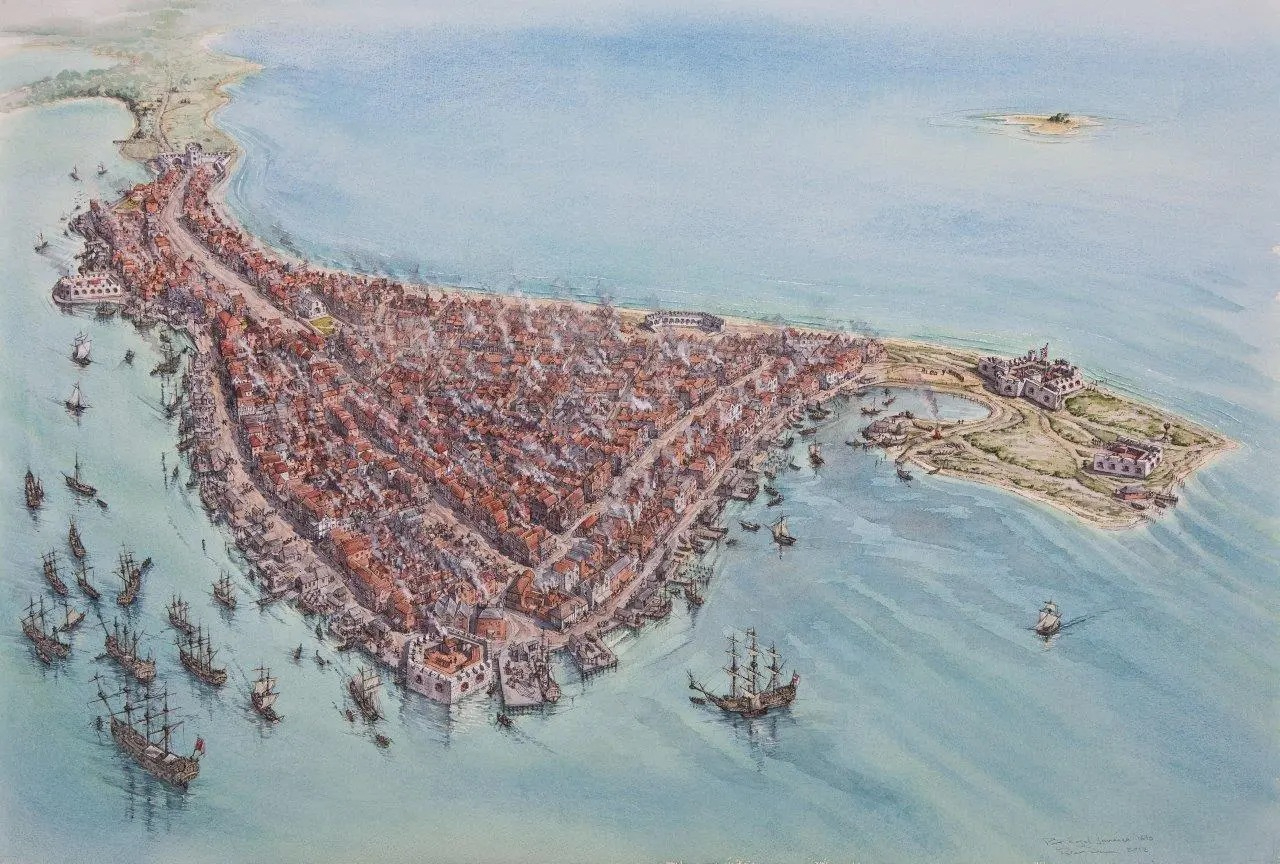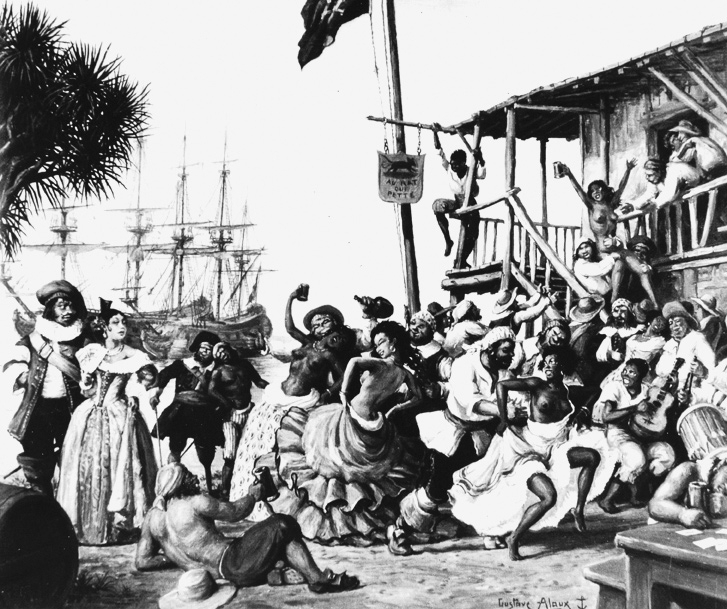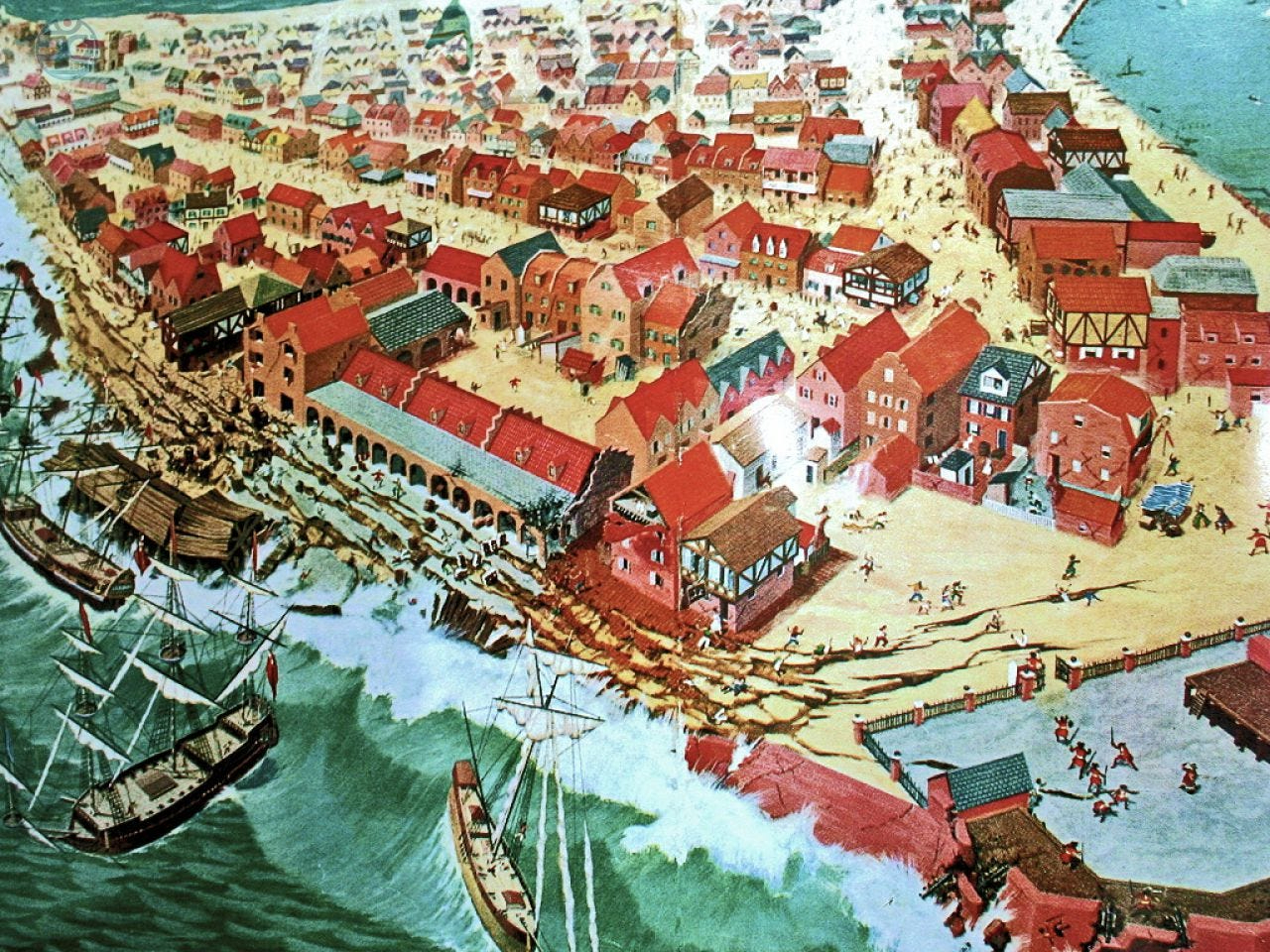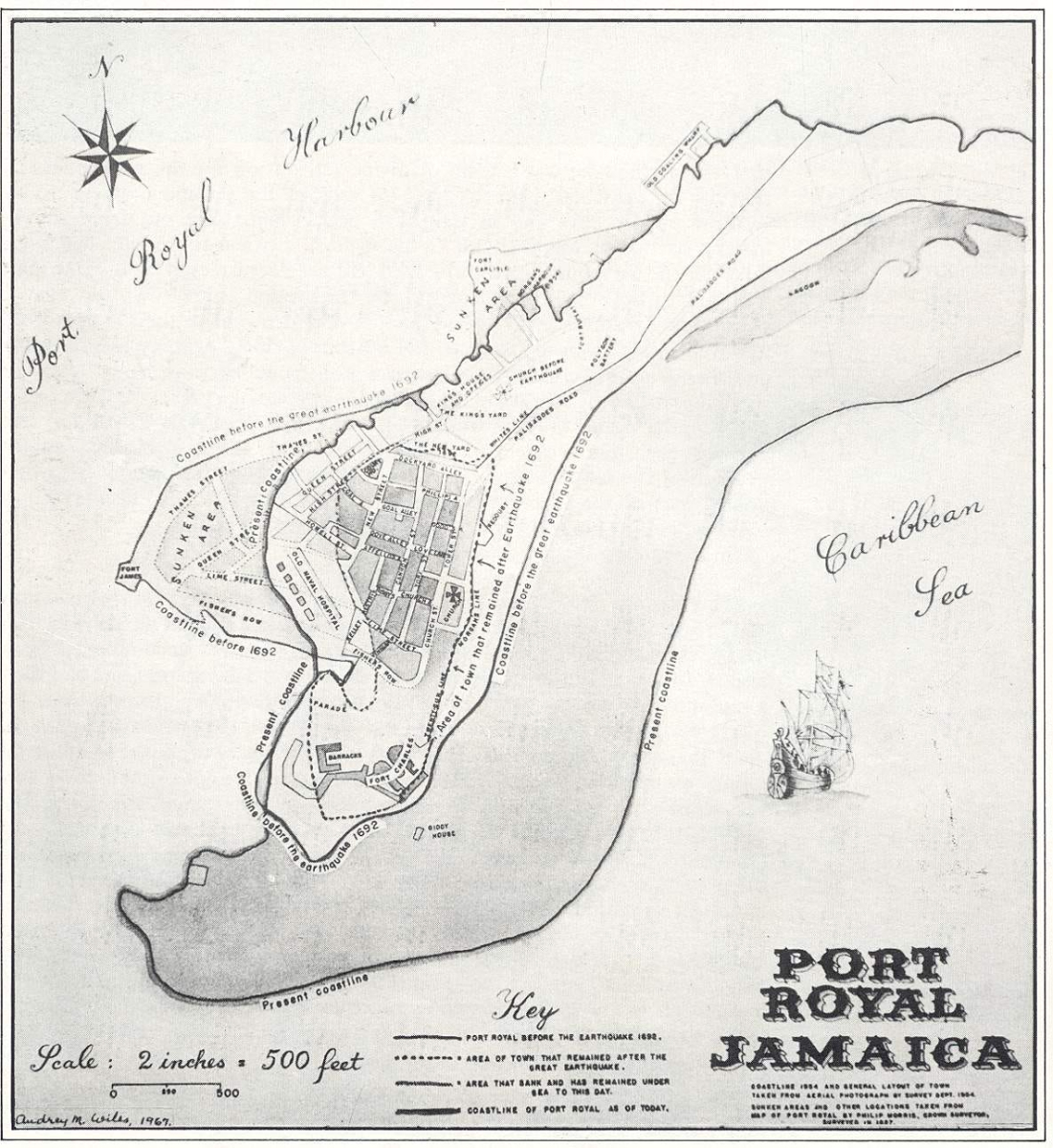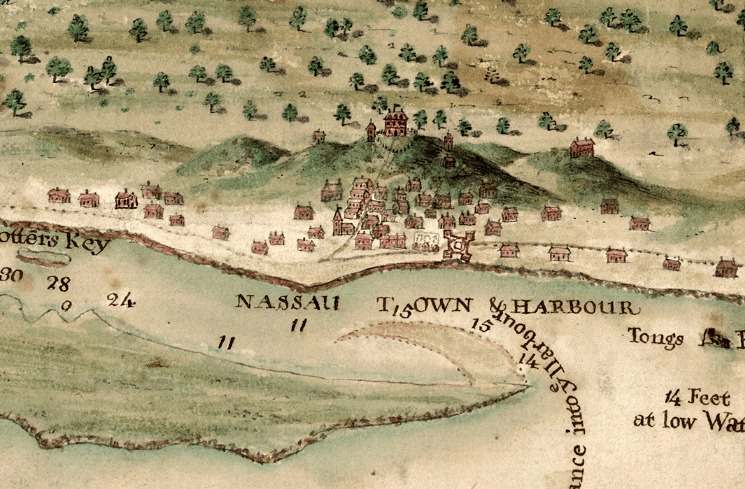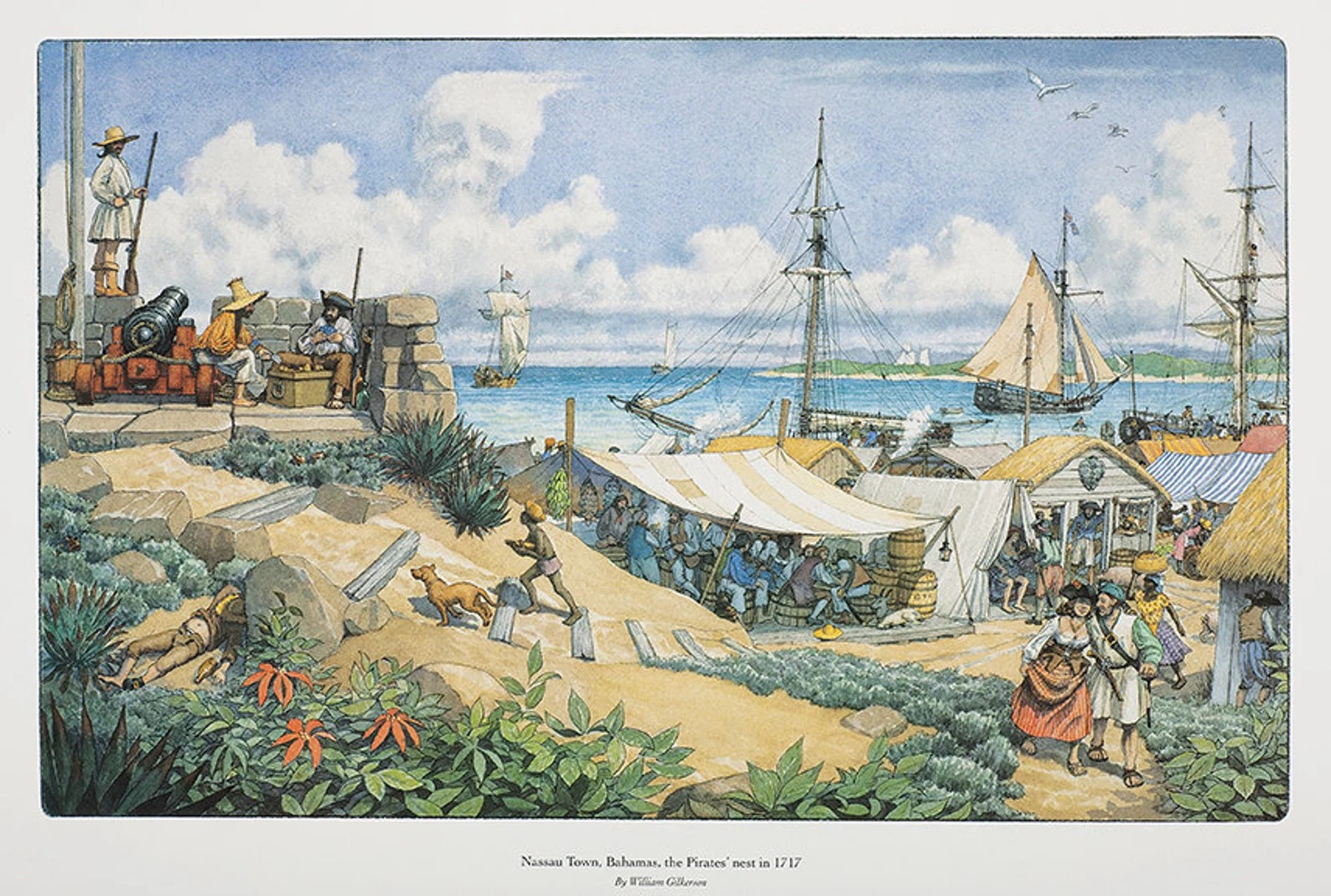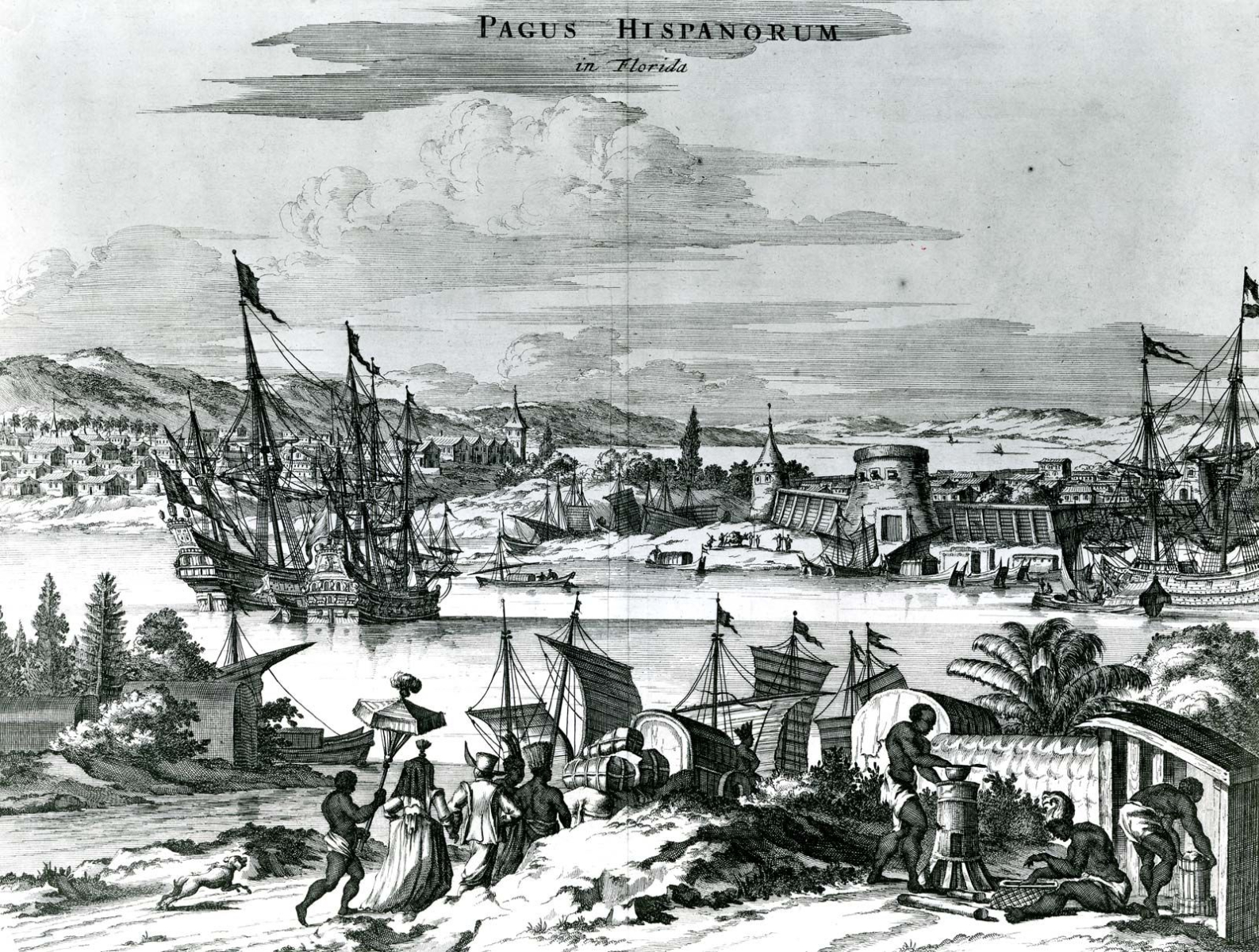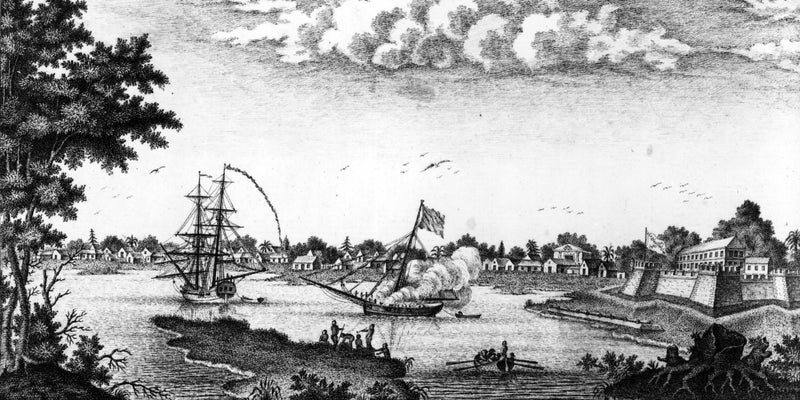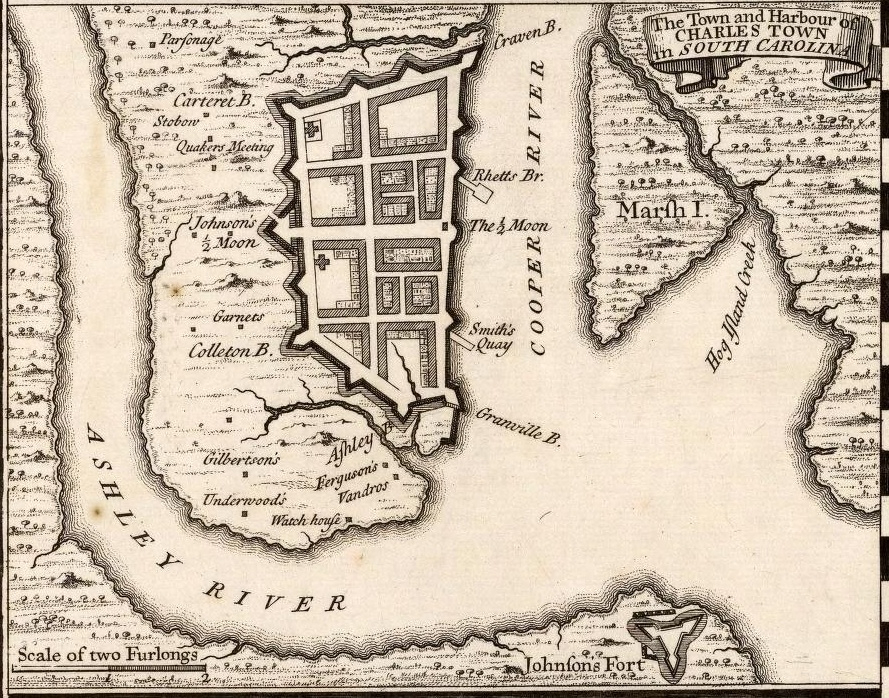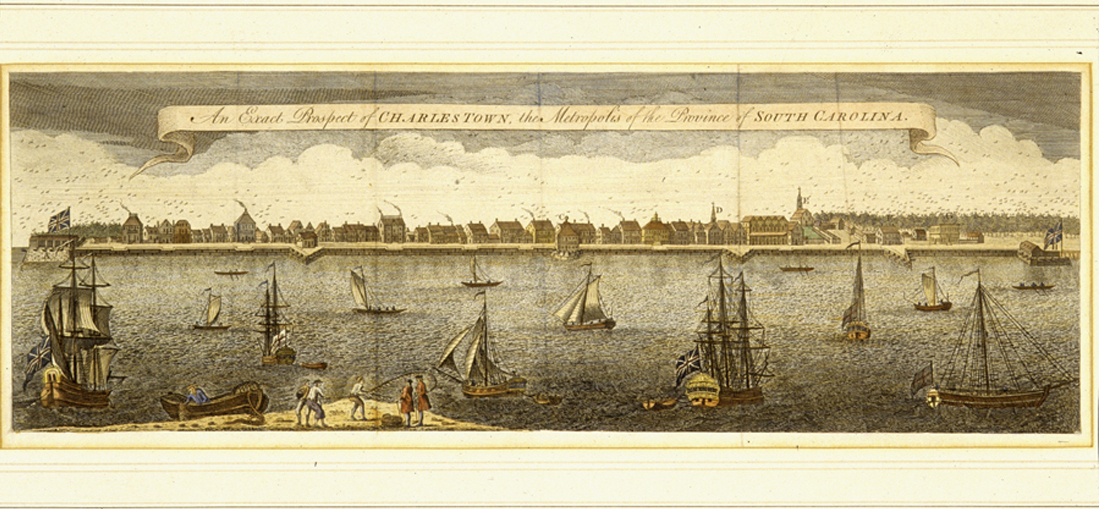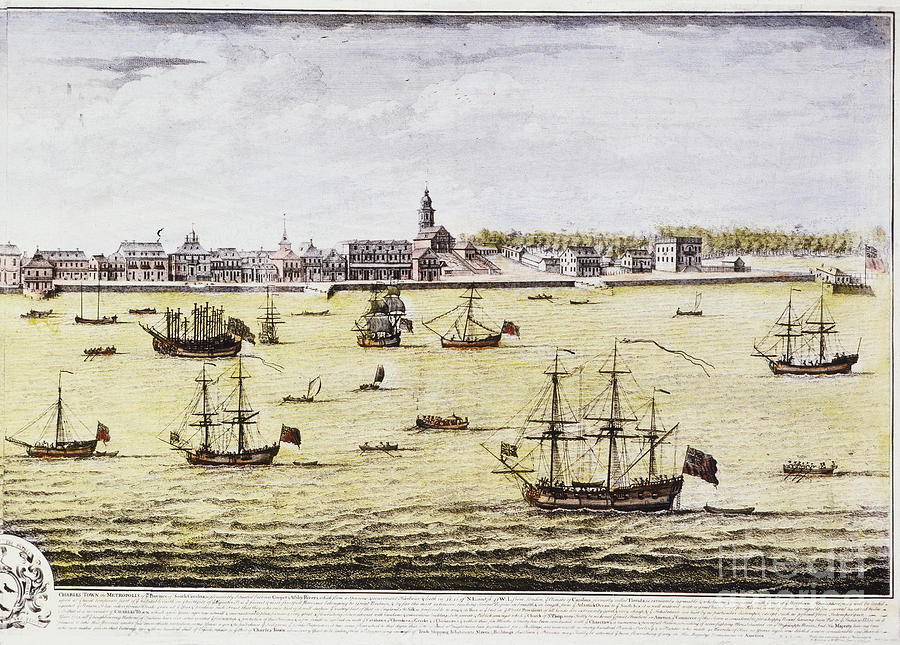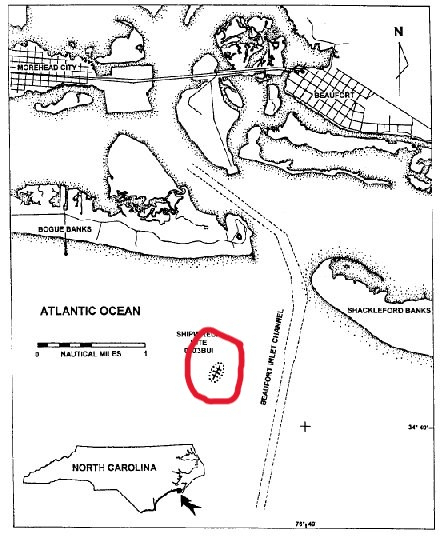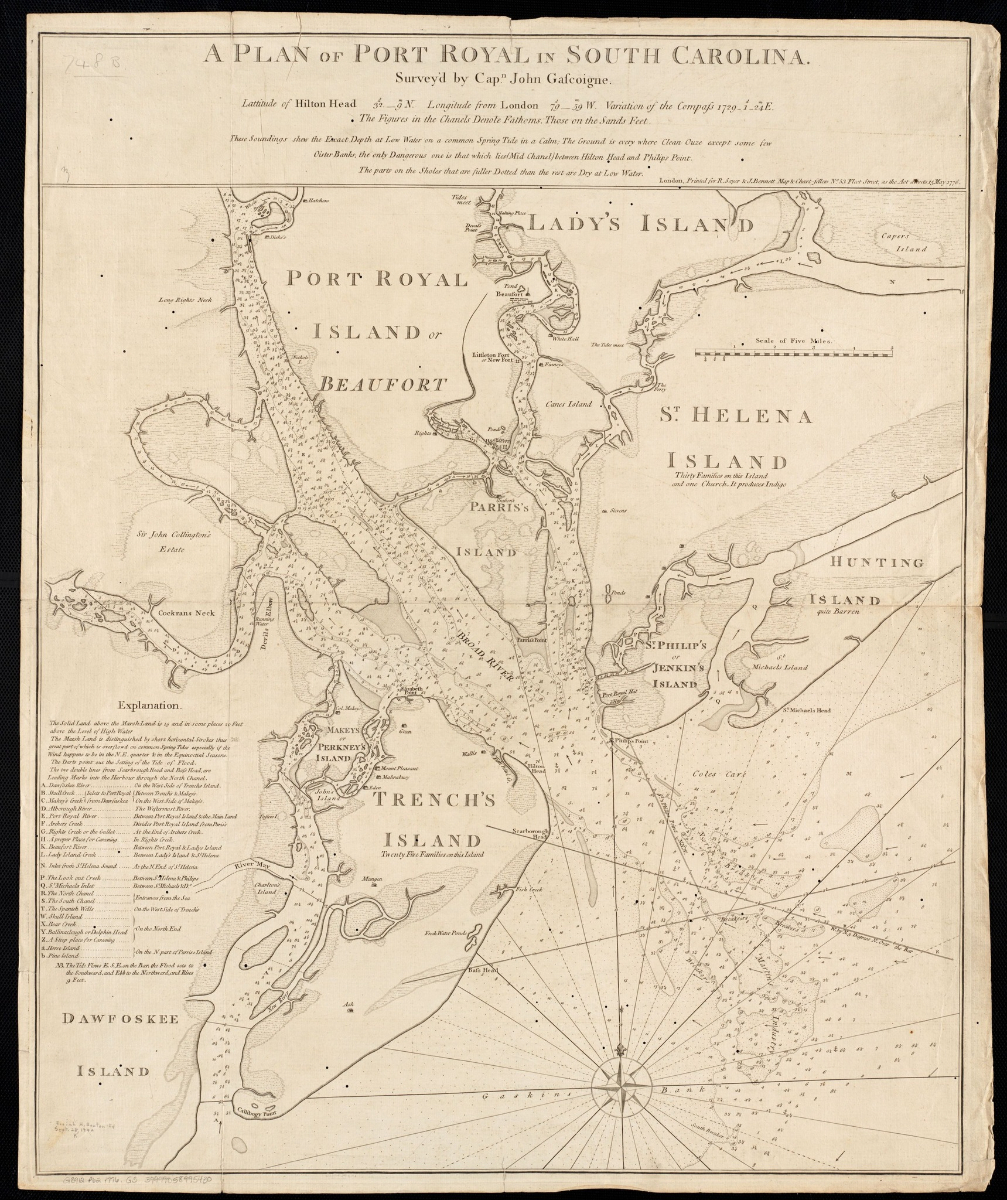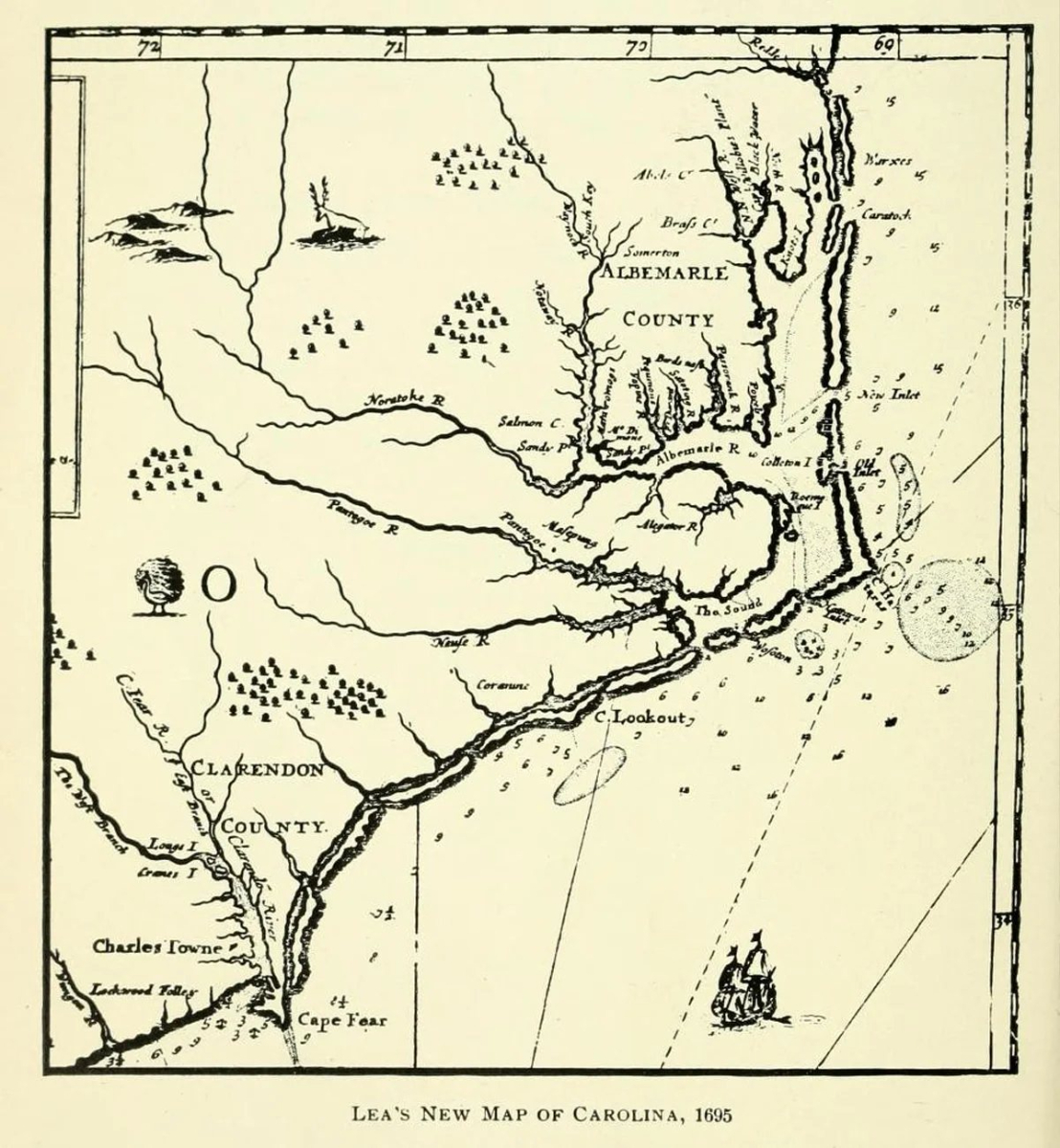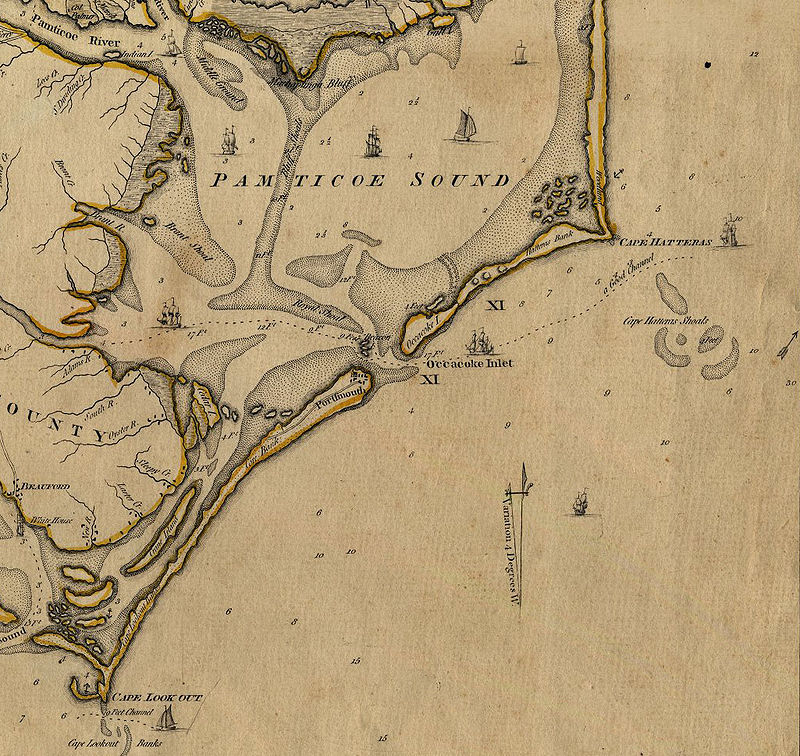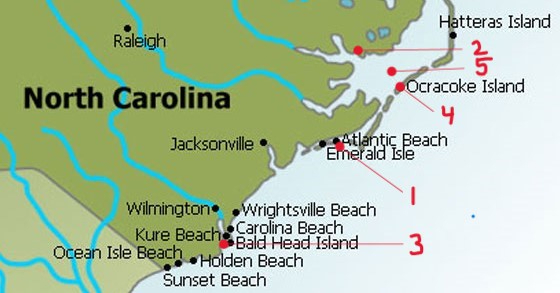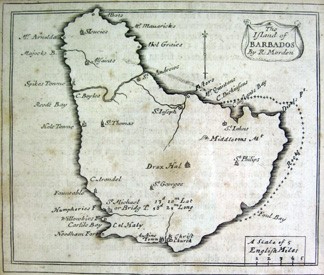-
Posts
38 -
Joined
-
Last visited
Content Type
Profiles
Forums
Events
Gallery
Everything posted by Sully Cross
-
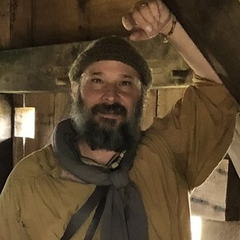
Aboard the Schooner Wolf
Sully Cross posted a gallery image in Pirates in Paradise & Fort Taylor Pyrate Invasion, Key West, FL
-
1) Port Royal, Jamaica circa 1690 prior to the 1692 Earthquake Painting courtesy of Peter Dunn, Archaeological Reconstruction Artist 2) Scene depicting Debauchery in the streets 3) The Earthquake of 1692 4) Maps showing island before and after the earthquake
-
From 1691 to 1712, the division between North Carolina and South Carolina grew. During these years, each of them started to gain their own identity, which was based on their unique cultural makeup, economic opportunities, and religious affiliations. North Carolina was officially separated from South Carolina in 1712. North Carolina’s first town, Bath, was established in 1705 by French Huguenots from Virginia. In 1710, New Bern was established by a group of Swiss and German immigrants led by Baron Christoph von Graffenried from Bern, Switzerland. Edenton was established in 1715 and was originally known as the “Towne on Queen Anne’s Creek.” Beaufort, pronounced BO-fert, was officially established in 1722 when it was given status as a seaport for collecting customs duties. Before 1722, it was known as “Fish Town." Hertford was established in 1722 as Perquimans Court House. Brunswick Town was established along the Cape Fear River in 1726 by Englishmen who moved from Charleston, South Carolina. Wilmington was laid out in 1733 as New Carthage across from Brunswick Town. Maps are of Bath and Beaufort, NC in 1770.
-
The first English settlers came to what is the modern port of Charleston, South Carolina in 1670. They were mostly wealthy planters from the Caribbean colony of Barbados. By 1700 the colony was exporting deerskin, cattle, rice, and naval stores (such as masts and turpentine). The Province of Carolina was split into North and South Carolina in 1712. Beaufort, pronounced BEW-fert, was chartered in 1711, was the second established town in South Carolina. Because of numerous attacks by Native Tribes and Spaniards, it was not until 1733 and the founding of Georgia as a buffer colony did Beaufort truly grow. Georgetown became the 3rd town to be settled in 1722. In 1732, Georgetown became an official port of entry, allowing the area’s merchants and planters to deal directly with traders. Previously, all foreign exports and imports had to pass through Charles Town. The colonial government of South Carolina fought several conflicts with local Native Tribes and Spanish Florida while fending off the threat of piracy. Below are early and mid 18th century maps of Charleston and Beaufort.
-
The first established settlement in what is now modern North Carolina was the first Charles Town, established on the Cape Fear River in 1665 by Sir John Yeamans and immigrants from Barbados. The town was soon abandoned in 1667. By 1691, people were referring to Carolina by its geographical divisions of North Carolina and South Carolina. North Carolina was connected with the Virginia immigrants and the Cavaliers who supported the Crown. South Carolina was linked to immigrants from Barbados, who founded the second Charles Town — present-day Charleston, South Carolina — in 1670. The first is a 1695 map of Carolina shows eastern North Carolina and the Counties of Albemarle and Clarendon. The second is a late 18th century map showing Beaufort, Ocracoke Island, and the Pamlico Sound of North Carolina.
-
Having left Charleston, South Carolina after their blockade of Charleston Harbor in May, here's a map showing locations where Pirates Blackbeard and Stede Bonnet spent their final days in 1718. 1. Beaufort, NC - June 10th Blackbeard's ship Queen Anne's Revenge and Israel Hands ship Adventure both ground on sandbars in the Beaufort Inlet, North Carolina. Crew and supplies are moved unto Bonnet's ship Revenge and a captured Spanish sloop. Bonnet travels to Bath, North Carolina to accept a pardon from Governer Charles Eden. Upon his return to Beaufort he discovers Blackbeard and Hands had stripped his ship of supplies, abandoned Bonnet's crew, and made off in the Spanish sloop. Blackbeard maroons 25 of his own men on a nearby island, Bonnet rescues them while searching for Blackbeard. Blackbeard and Hands reach Bath, accept pardons, and moor in the town for the summer. Bonnet, unable to find the two, makes his way south to the mouth of the Cape Fear River. 2. Bath, NC - Home of North Carolina Governor Charles Eden. Eden allows Blackbeard and Hands to sail in their Spanish sloop now renamed Adventure. They return in September with cargo from 2 captured French ships and split the haul with Eden and Judge Tobias Knight. 3. Bonnet’s Creek near Southport, NC - Bonnet's final stand occurred on September 27th. His ship, in much need of repair, is careened near the mouth of the Cape Fear River, North Carolina. Several days later Bonnet is surprised by Col. William Rhett, sent by South Carolina Governor Robert Johnson, who was actually searching for Charles Vane. He makes a fight of it but is captured and taken to Charleston for trial and execution. He is hanged December 10th. 4. Ocracoke Island, NC - Ocracoke Inlet was Teach's favorite anchorage. It was a perfect vantage point from which to view ships travelling between the various settlements of North Carolina, and it was from there that Teach first spotted the approaching ship of Charles Vane in October. Vane had sailed north from Charleston unknowingly pursued by William Rhett. Teach and Vane spent several nights partying on the southern tip of Ocracoke Island, accompanied by Hands, Robert Deal and Calico Jack Rackham. Vane and his crew left in early November, but he and Deal soon lost their ship to mutineer Calico Jack. 5. Pamlico Sound, NC - Blackbeard's last fight happens almost 2 months after Bonnet's capture. Hands and half of their crew were at Bath while Blackbeard was aboard the Adventure partying with locals in Pamlico Sound. Lt. Robert Maynard sent by Virginia Governer Alexander Spotswood surprises him on November 17th and attacks. Both ships ground on sandbars, fire shots until refloated, after several hours Blackbeard is killed, and the survivors captured. Maynard's partner Cpt. Brand captures Hands and the rest of the crew in Bath. The prisoners are taken to Williamsburg, Virginia to be tried and executed. In exchange for a pardon, Hands testified against the corrupt North Carolina officials. His fate is unknown to history.
-
The Colony of Barbados was claimed by England in 1625. It quickly grew to become the third major English settlement in the Americas (behind Jamestown and Plymouth) due to its prime eastern location. In the period 1640–1660, the West Indies attracted over two-thirds of the total number of English emigrants to the Americas. By 1650, there were 44,000 settlers in the West Indies, as compared to 12,000 on the Chesapeake and 23,000 in New England. Barbados generated more trade than all the other English colonies combined. This remained so until it was eventually surpassed by geographically larger islands like Jamaica in 1713. Bridgetown, the capital, was one of the three largest cities in English America (the other two being Boston, Massachusetts, and Port Royal, Jamaica.) By 1700, the English West Indies produced 25,000 tons of sugar and replaced tobacco, which had been the island's main export. So much land was devoted to sugar that most foods had to be imported from New England. The poorer whites who were moved off the island went to the English Leeward Islands, or especially to Jamaica. From 1663-1670, the provinces of North and South Carolina became official, when some of the surplus population left Barbados for the Carolina Colony. Stede Bonnet was a Barbadian-born pirate and military officer, known as the Gentleman Pirate, because he was a moderately wealthy landowner before turning to a life of crime. Bonnet was born into a wealthy English family on the island of Barbados and inherited the family estate after his father's death in 1694. Bonnet decided he should turn to piracy in the spring of 1717, bought a sailing vessel, the Revenge, and travelled with his paid crew. He met the infamous pirate Blackbeard, and was found incapable of leading his crew. He temporarily ceded his ship's command to Blackbeard and plundered and captured merchant ships along the East Coast. Blackbeard and Bonnet separated and a few months later was captured off North Carolina. Bonnet was taken to Charleston, South Carolina to be tried as a pirate. It was there that he temporarily escaped, believed to have been aided by fellow Barbadians that lived in Charleston. He was recaptured and hanged Dec 1718. The island negotiated its independence at a constitutional conference with Britain in June 1966. Barbados became an independent state on 30 November 1966, with Errol Barrow its first prime minister, with Elizabeth II as Queen of Barbados. Map of Barbados circa 1688.
-
I love reading and researching the Golden Age of Piracy, mostly focusing on the rascals that worked the Caribbean and Southern Colonies. From the West Indies to Belize and up to the Outer Banks of North Carolina, is the area that I'll be posting some info that you might or might not have read, and tie together some new information to help others in researching this interesting period in history. Any questions? I love to talk about mysteries and theories, so please feel free to start a discussion. The painting below is by Don Maitz. It depicts Blackbeard's Flotilla off Bald Head Island, North Carolina.

.jpg.75281b88d3d1119e711fb505ad8ce663.jpg)
